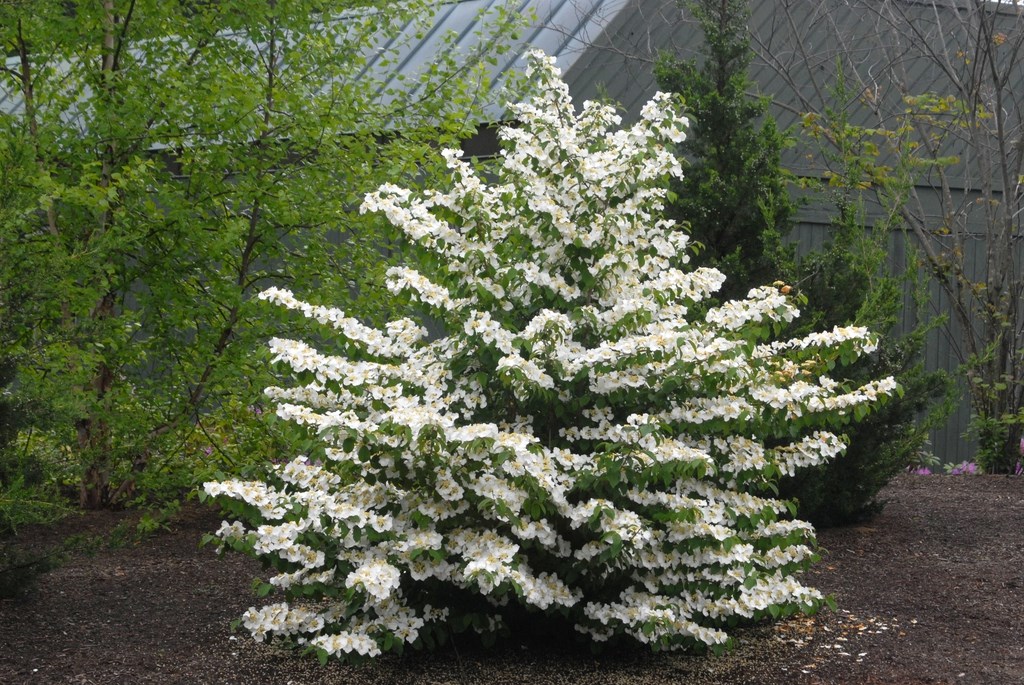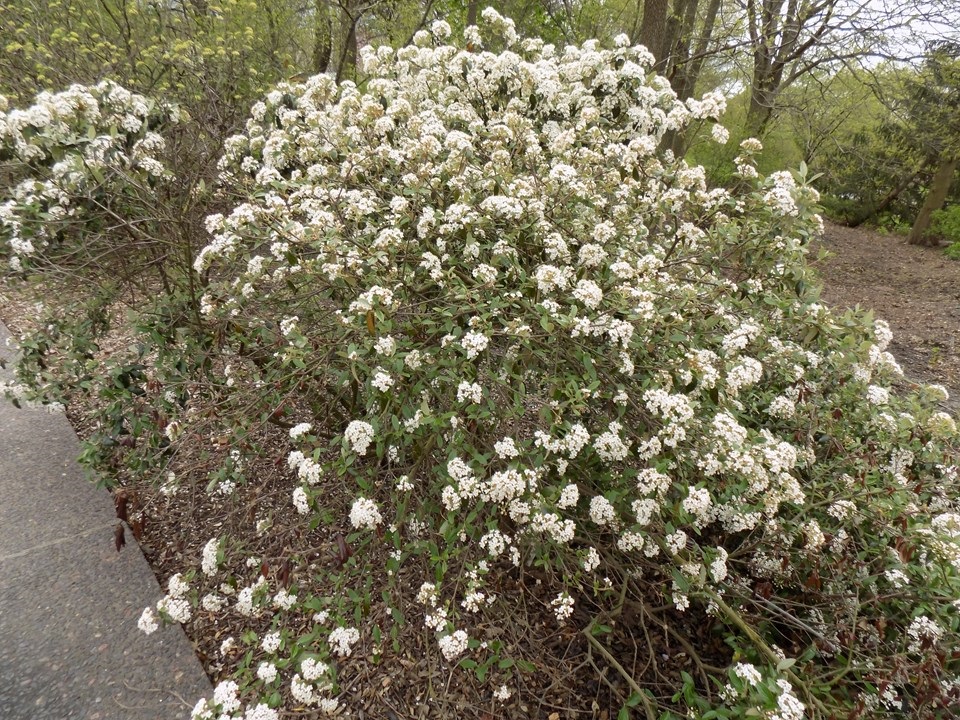919-552-8286
sales@adcocksnursery.com

Grows approx. 3-4' ht & sp
Viburnum obovatum 'Raulston's Hardy' carries a tight, dwarf habit and tends to be hardier than Mrs. Schiller's. Has a fine texture and small, narrow leaves on a very tight bun-shaped plant. The plant covers itself in clusters of white flowers in April but will often begin flowering in the fall and continue sporadically until spring. Flowers are followed by red fruits which become black and are highly favored by birds. In mild winters, it will remain mostly evergreen although often taking on purplish tones after frost. In colder areas, it will become semi-evergreen to fully deciduous. A good substitute for Boxwoods, it can be used in a variety of landscape settings.
A JC Raulston Arboretum First Choice Plant
Photo Credit: JC Raulston Arboretum

Grows 6-8' ht x 8-12' sp
*** SOLD OUT *** 'Shasta' is a large shrub that produces abundant flowers in the spring on horizontal branches followed by copious red fruits that eventually turn black, and are always a bird favorite. Large flower clusters feature showy outer snow-white sterile flowers. Fall leaf color is a magnificent reddish-purple and made even more stunning by the 'ridged' potato chip look. This plant grows well in sun to part shade and is adaptable to many soil types. Prune as needed after flowering, since next season's blossoms will appear on new growth. Introduced in 1979 by the U.S. National Arboretum.
Photo Credit: NC Extension

Grows 12-18' ht & sp
This is a superb screening plant!
Chindo Viburnum is a medium-growing, pyramidal, broadleaf, evergreen shrub. Produces large, dark green leaves with red berry clusters in summer. The plant can make an excellent hedge or screen. Thrives in moist well-drained soil.
Photo Credit: Phillip Merritt & Jim Robbins

Evergreen, grows 4-5' ht x 7-8' sp
*** COMING SOON *** This viburnum is best noted for its compact, spreading habit and glossy foliage. Is a densely-branched, multi-stemmed shrub that typically grows 4-5' tall and 7-8' wide. Features fragrant, creamy white flowers in April. Flowers are followed by clusters of red berries which ripen in August and persist into the fall before eventually turning black.
Photo Credit: Missouri Botanical Garden